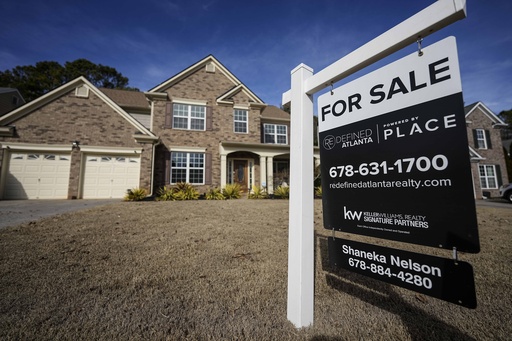LOS ANGELES (AP) — Mortgage rates are expected to come down later this year, but any benefit to homebuyers could be muted by developments in the market for financial instruments tied to mortgages.
Over the last couple of years, uncertainty about inflation and the trajectory of mortgage rates led investors to demand a fatter yield for owning mortgage-backed securities relative to what they would get buying the government’s 10-year Treasury bonds.
Mortgage-backed securities, or MBS, are investments made up of home loans and, like bonds, pay interest to investors. The difference in the interest, or yield, offered by each of these types of investments can be gauged by looking at the spread between mortgage rates and U.S. government bond yields.
Historically, that spread averaged around 1.7% a month. It surged last year, swelling in June to nearly 3% — the widest gap since August 1986, according to Federal Reserve data.
“When rates started rising, essentially we really didn’t know how high they would go or (for) how long,” said Mark Fleming, chief economist at First American Financial. “Mortgage-backed securities investors said ‘I need to charge you more over the risk-free 10-year Treasury rate to be willing to buy a mortgage-backed security.’”
The bond and mortgage markets are sensitive to what’s happening with inflation, Federal Reserve interest rate policy and other factors. Signs of cooler inflation and signals from the Fed that it might begin lowering its short-term rate this year have helped pull mortgage rates and bond yields lower after each hit multiyear highs in October.
Those moves have influenced the spread between the average rate on a 30-year mortgage and the 10-year Treasury yield, keeping it mostly coming down this year. Last month, it was down to 2.61%.
Still, while off its highs, the spread remains higher than it has been historically, and that creates upward pressure on mortgage rates. That means higher borrowing costs for homebuyers.
Consider, the 10-year Treasury yield averaged 4.21% last month, while the average rate on a 30-year mortgage was 6.82%. If the spread had been in line with what it has been historically, the average home loan rate would have been roughly 5.91%.
The bottom line? Even if mortgage rates ease further this year, as economists expect, the still-elevated spread between mortgage rates and bond yields will limit homebuyers’ potential savings.
“For the potential homebuyer or the homeowner contemplating selling, any rate relief is a good thing,” Fleming said. “But it may take more to really move the needle on what a monthly payment would look like.”



